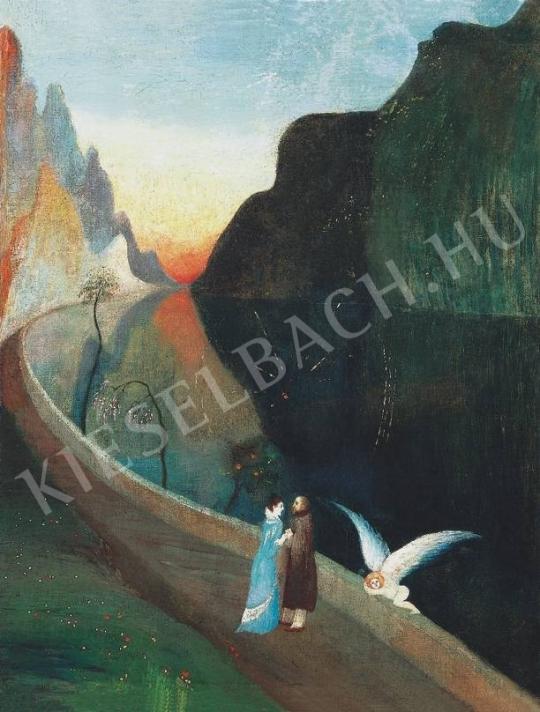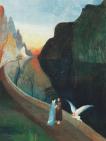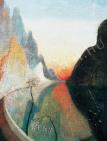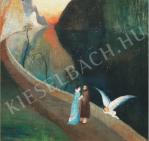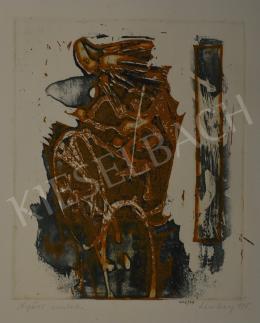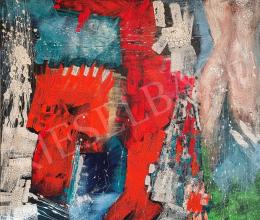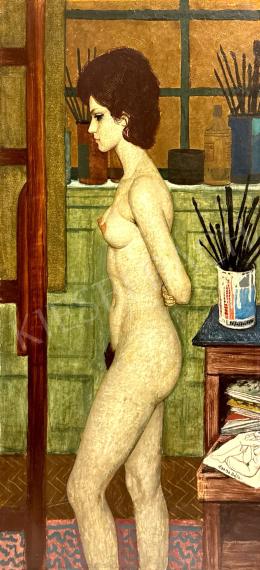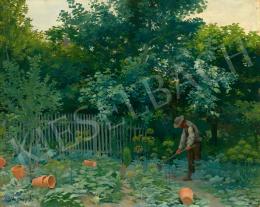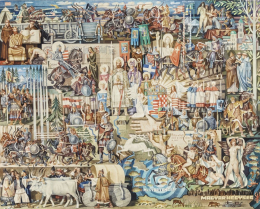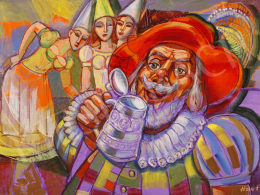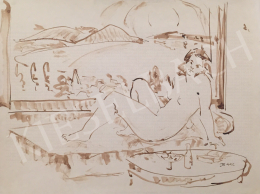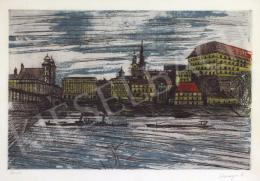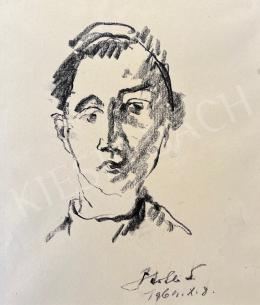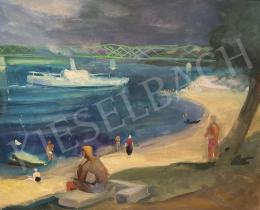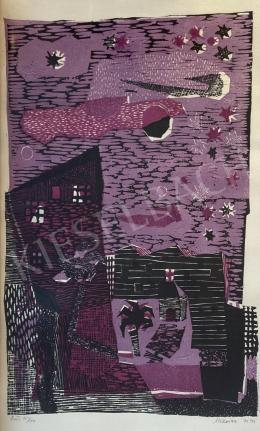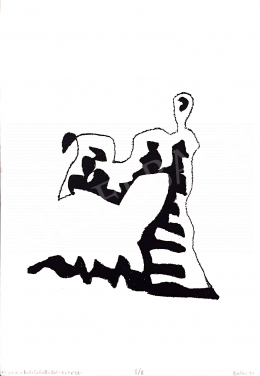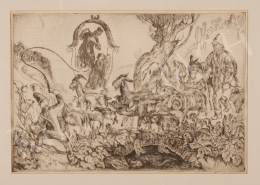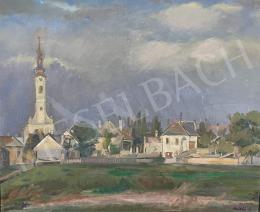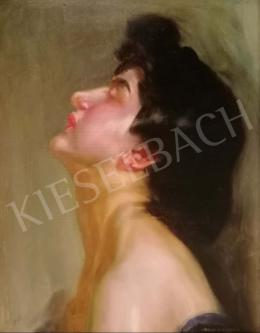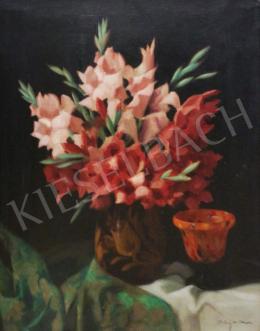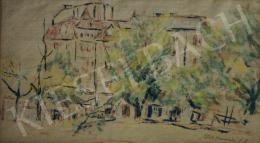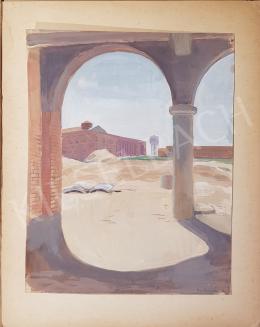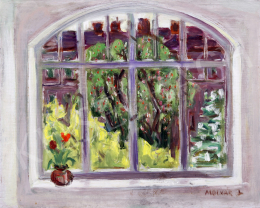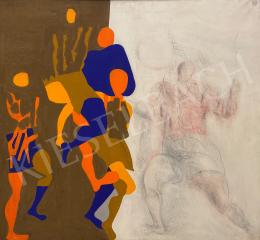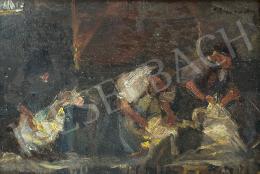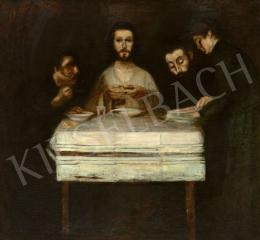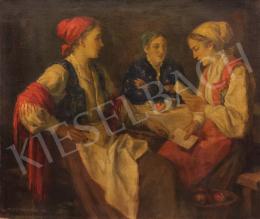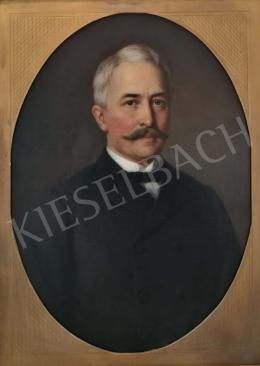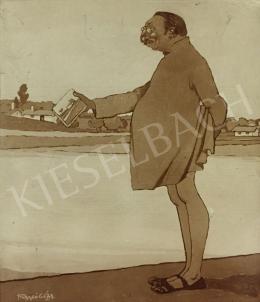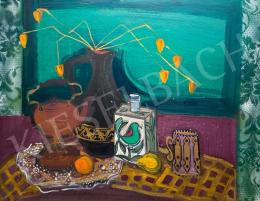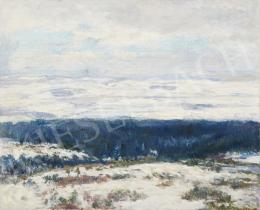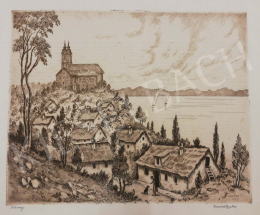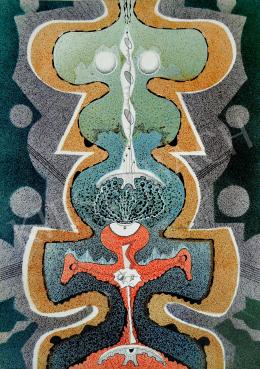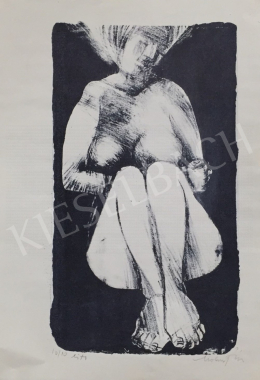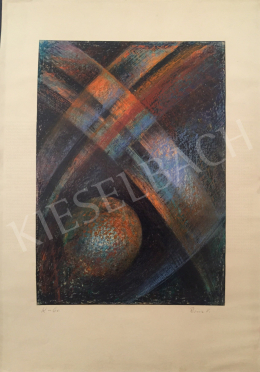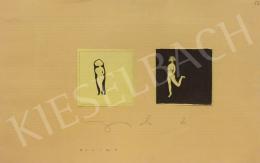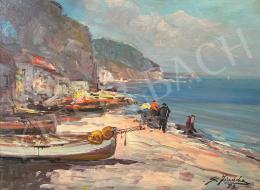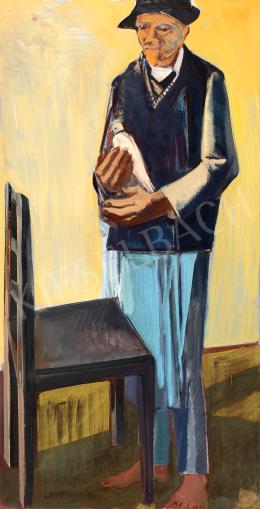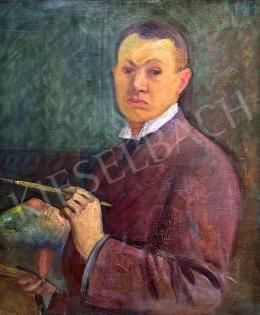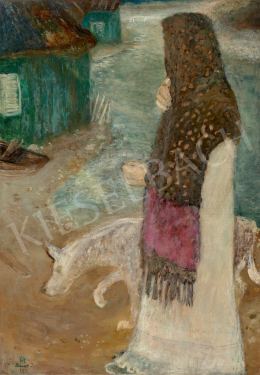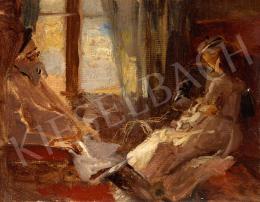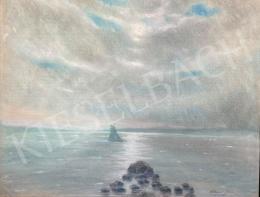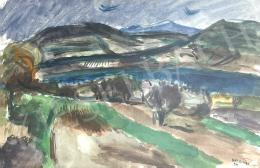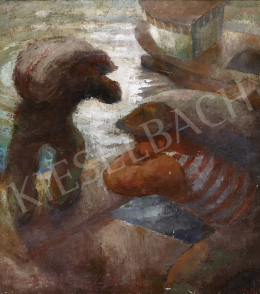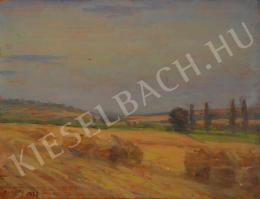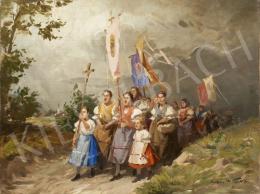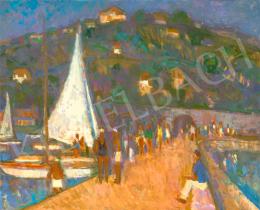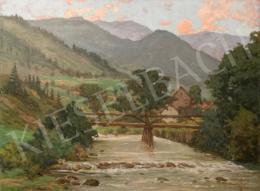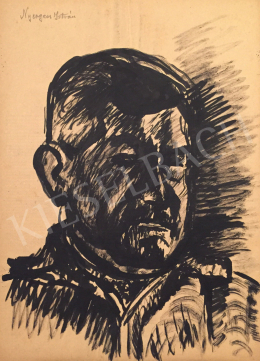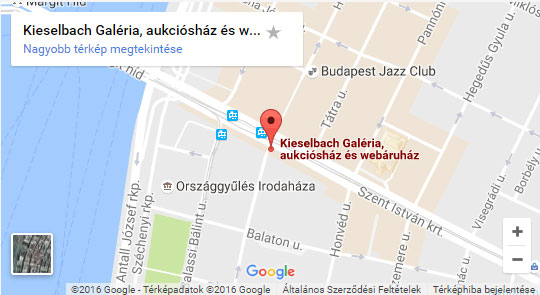REPRODUCED
Lehel Ferenc: Csontváry Kosztka Tivadar, a posztimpresszionizmus magyar előfutára. Budapest, 1931. 40-41. p. detail
BIBLIOGRAPHY
Lehel Ferenc: Csontváry Tivadar. A posztimpresszionista festés magyar előfutára. Budapest, 1922.
Lehel Ferenc: Csontváry Tivadar, a posztimpresszionizmus magyar előfutára. Budapest, 1931.
Ybl Ervin: Csontváry Tivadar. Budapest, 1958. (in English, 1959.)
Németh Lajos: Csontváry Kosztka Tivadar. Budapest, 1964.
Németh Lajos: Csontváry Kosztka Tivadar. Budapest, 1970.
Pataky Dénes: Csontváry. Budapest, 1975.
Németh Lajos: Baalbek. Budapest, 1981.
Csontváry-emlékkönyv. Budapest, 1976.
Sinkó Katalin: A madonna festő. Művész-szerep és historizálás Csontváry önarcképein. In.: Művészettörténeti Értesítő, 1991/3-4. 156-174.
Perneczky Géza: A rejtőzködő Csontváry. In.: Holmi, 1993/3. 332-352.
Sinkó Katalin: Az "hommage" Csontváry önarcképein. In.: Művészettörténeti Értesítő, 1994/1-2. 155-163.
Mezei Ottó: Csontváry dokumentumok I. Budapest, 1995.
Romváry Ferenc: Csontváry dokumentumok II. Budapest, 1995.
Tímár Árpád: Interpretáció vagy legendagyártás. In.: Ars Hungarica, 1995/1. 45-62.
Romváry Ferenc: Csontváry Kosztka Tivadar. Pécs, 1999.
"I didn't know that there had been any other great painter but me in this century."
Pablo Picasso
WAITING FOR WORLD FAME
'On my way to Paris, in 1907 with the result of divine providence, I faced millions alone, and I smashed the vanity of the world to pieces.'
Tivadar Csontváry Kosztka has been considered "the most signifificant Hungarian painter" for years in Hungary and it is widely recognized that his oeuvre stands the greatest chance of achieving an international appreciation. Lajos Fülep, one of the most outstanding fifigures of 20th century Hungarian art history, who discovered Ady and was an enthusiastic supporter of the group The Eight, claimed that Csontváry's main pieces of work 'are at the same level as the highest peaks of the art history of our world and the person who created them is a phenomenon not only in our national history and in this century but in the history of the whole world.' He had no doubts that the international recognition would come one day: 'sooner or later, the world will have to learn it.
And it will learn it' - he wrote.
THE MYSTICAL VOCATION
'Inspiration and will-power are my wings'
Csontváry's career, the judgment of his pictures - which was different in every era - shows the fate of an autonomous genius who was not understood and was pushed into loneliness. His life and art inspired several literary pieces and films. He considered his own art as an instrument of superior powers, divine reveal. His vocation, he said, was transmitted to him by an'ultra-terrestrial appeal'. While working as a trainee in a pharmacy, he was addressed by a celestial voice on 13 October, 1880 : 'You will be the greatest painter of the Solar Circuit, greater than Raffael.' The mystical message was followed by a sober consideration of reality and logical, expedient actions. In a letter, Csontváry asked Gusztáv Kelety, who was one of the greatest authorities in art at that time, for advice, and then, accepting Kelety's critiques given on his drawings, began a tenacious self-education. In spring the following year, he traveled to Rome to study Raffael's work, the great 'opponent' whom he desired to surpass.
Having returned to Hungary - after a short stay in Paris - , he rented a pharmacy in Gács so as he would be able to create a financial independency which would enable him to live for his vocation in the future. After ten years of work, in 1894, his dream could come true: he let his flourishing pharmacy out and created a financial base for painting. He studied in Munich, in Simon Hollósy's legendary free school, in Karlsruhe, in the Academy of Düsseldorf and in the Julian in Paris. So, Csontváry was not a naďve autodidact. His studies of drawing made during his years of studies show his excellent manual skills, the treatment of colors in his paintings can be connected to the modern trends of the era.
CREATING AN OWN WORLD
'an extraordinary work, which was not influenced anyone but God, which did not accept any advice from any teachers, because it was conceived in an ecstatic state'
Csontváry's art was not formed by schools, trends and teachers; it was formed by his sovereign worldview, which was totally and ecstatically independent. His painting art is technically refined and cultivated, and it is still untouched; perfectly logical and systematical, and is still instinctive. His art is a revelation of a man who did not choose his ideology but succumbed his life to a superior power; who 'did not need to idealize reality because for him the ideal was reality itself.'
THE INSPIRING POWER OF LOVE
'the one who split up with the present and set off with a presentiment, who used his heart everywhere and every time in his struggles.'
It is the fifirst time that Csontváry's painting The Encounter of Lovers has been shown in public. So far, we have known only a part of the more than hundred-year-old picture. It was the central motif, the couple looking at each other with the figure of Amor sleeping and what is more, this part could be seen only in a black-and-white reproduction in a monograph on Csontváry written in 1931. Now, that the painting has been found after one hundred years, we have the possibility to reveal the symbolic allusions of this complex piece of work, which enables to give more than one interpretations.
The symbols in the picture The Encounter of Lovers - just like in other prominent paintings of Csontváry - appear in a way which enables several interpretations. One can fifind here the ancient, universal symbols of humanity like the tree of life, the mystical light, the source of life and archetypical contrasts like man and woman, dark and light. This universal symbolic world is penetrated by Csontváry's autonomous, subjective symbolic language, which roots in the painter's own disposition and worldview.
The central motif of the picture is the couple: the figure of the man, which must be Csontváry's hidden self-portrait, and the woman wearing a blue dress, who is gently touching his hand. Their gaze is entwining, gentleness, surrender and the timeless silence of the moment is suggested. On the stone parapet of the road a naked, winged cherub is sleeping - like someone who, having accomplished his task, let the thread of actions being completed in a perfect harmony. Along the road, gracefully bending, young trees are blooming; the beams of the rising sun cover nature with warm light, painting the dim silhouette of the mountains onto the motionless surface of the bending river. Above the couple, whose glances seem to be embracing, there is a mystical light shining, as a symbol of inflaming love. Already Lajos Németh, Csontváry's monographer proposed in connection with the central part of the painting that the beginning of the mature art of the painter, the spiritual change and artistic consummation around 1902, might probably be connected to a love experience that was not known about but which might have a great influence on the painter's oeuvre. The emerge of the picture made it clear that The Encounter of Lovers is a confession sublimed in picture, the apotheosis of a fulfillment of a long-desired encounter. An inspired moment is formed into a symbol in the picture, a moment which is somewhere between the old and the new, the present and the future but which also contains the completeness of life, the timelessness of the harmony found.
The archetypical motifs of the picture - the river representing the source of life and the flflow of feelings, the trees producing flflowers and fruits which symbolize the renewal of life, the way to the distant, rising sun and the dialectic antagonism of the past in shadow and the present shining in light - create a visual world which make Csontváry's masterpiece a carrier of a universal message.
The surface of the picture is gleaming in a transcendent light, and it suggests the apotheosis of love, a feeling bearing a new life.
Péter Molnos






